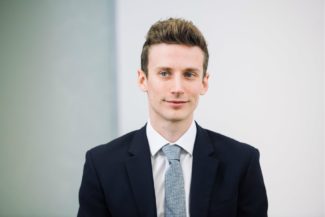Race to publish rival SEP, FRAND Codes of Conduct: new CEN-CENELEC working groups established
22.03.2018
In October last year we reported on the difficulties that the Commission was facing in drafting its Communication on SEPs, in particular relating to the issues of use-based licensing or chipset licensing (see here). We also noted that certain industry participants, such as Nokia and Ericsson, had confirmed their intention to establish an industry-wide code on best practices for SEP licensing.
In the subsequent months there have been some significant developments. The Commission’s Communication has been published (here, analysed in an article we wrote for the CIPA Journal here), although there was a notable absence of any specific reference to use-based or chipset licensing. The Nokia-backed proposal for a Code of Conduct has also crystallised into the form of a CEN-CENELEC workshop that kicked off in October 2017 (WS-SEP).
Perhaps alive to the risk of that workshop producing a Code of Conduct that favoured SEP holders, a rival CEN-CENELEC workshop was set up by ACT (The App Association) and the FSA (Fair Standards Alliance) in February 2018 (WS-SEP2). Although slower off the mark, this second workshop is operating to a faster timetable, both workshops aim to produce a final text of their Code of Conduct by June 2018.
The detailed project plans for each workshop reveal exactly the sorts of differences in approach that one might expect. Both workshops intend their participants to discuss a range of FRAND issues in order to identify best practices from which a Code of Conduct can be developed. However, there are some clear differences in emphasis from each workshop.
WS-SEP focuses on the goal of concluding licence agreements and resolving licensing disputes quickly and efficiently. As part of this, it proposes the establishment of an ‘IoT SEP Licensing Gateway’, describing this as a “process and structure to engage in licensing discussions and resolution in a streamlined or more systematic way”.
On the other hand, WS-SEP2 envisages a broader range of topics being covered, making specific reference to the issues of patent hold-up and licensing without mandatory bundling on a portfolio only basis.
The differences in approach are perhaps most clearly seen in the sections of each workshops’ project plan which deal with what we have previously described as use-based and chipset licensing (here) – topical issues that the Commission did not address directly in its SEP Communication.
Both workshops recognise the importance of developing guidance on the value of a standardised technology. However, while WS-SEP2 states that “a patent owner cannot seek to exaggerate the value of its patent by focusing on value created by downstream innovators and devices”, WS-SEP warns that “the price of a car does not reflect the value of connectivity in a car, equally the price of a chip may not reflect the value that connectivity, enabled by a chip brings to an end product”.
And though WS-SEP2 intends its guidance to cover “[t]he long history of FRAND licensing at all levels of the supply chain”, by contrast, WS-SEP takes a much narrower approach, proposing discussion on “[t]he appropriate licensing points to efficiently provide access-for-all”.
The Commission’s decision to avoid taking a stance on either of these issues in its Communication, the value at stake in the light of the IoT and the impact that use-based and chipset licensing could have on royalties paid in new licences meant that these areas were always likely to become a battleground.
We will be very interested to see the final products of both workshops. However, if the end result is two conflicting Codes of Conduct, they may have little impact on resolving the most contentious FRAND issues.


